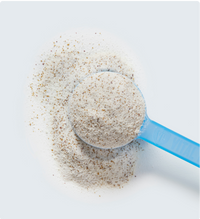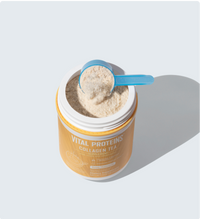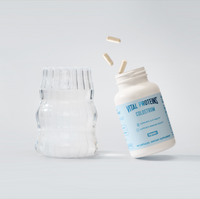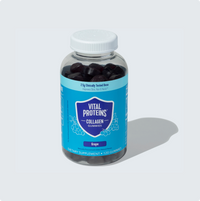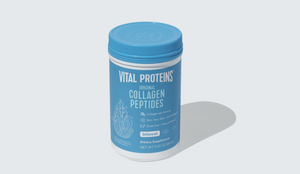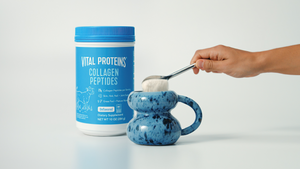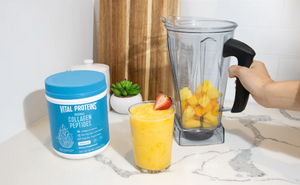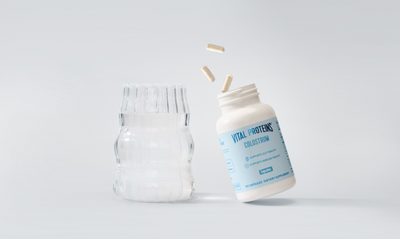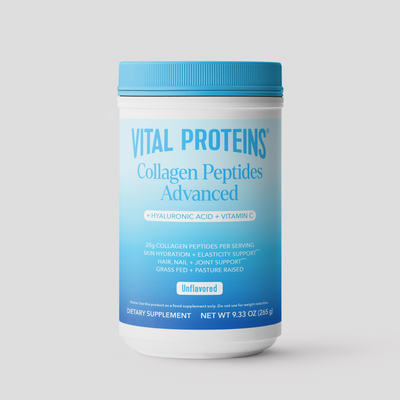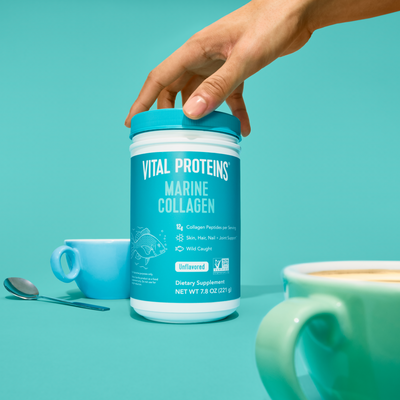Tom Smurr is a member of Vital Proteins Customer Advocate Team. In this weekly blog series, Tom (@triathletetommy on Instagram!) offers an inside look at his journey to the paratriathlon.
The beginning of my para-triathlon training was very focused on swimming. As I was in the process of figuring out the bike and running portions of the race and also determining which equipment to use in the water – wheelchair/handcycle or ambulatory bike/running prosthetic – I learned quite a bit about “full-body workouts.” I also started paying way more attention to my pre-swim nutrition to keep up.
In the water, paratriathletes do not get assistive devices, but they do get to wear a wetsuit under all conditions. It was easy to start here because I was already anticipating how this part of the event would unfold. I knew that my wheelchair-basketball-conditioned arms and shoulders were going to benefit me in the swimming portion. Unfortunately, my core was weak, and my legs could not keep up. Add in the difficulties that come with trying to breathe in the water – I definitely had my work cut out for me!
Staying in Control
I worked with my elite level swim coach from Dare2Tri, Stacee, to begin the fundamentals of swimming. I found my rhythm and started to feel more comfortable in the water. A drill that helped me the most was the 3-5-7 stroke breathing drill: Freestyle swim down the lane, breathing every 3 strokes, then 5, then 7. In triathlon training this helps with preparing for irregular wave patterns and people blocking your way to breathe.
RELATED: Tom Smurr: How I'm Getting Stronger
After working on breathing control, it was time to focus on my legs. Since I have one fully functioning leg and a weaker half leg, I knew I would have to take a unique approach when it came time to strengthen it. I began by using a fin on my one foot. Engaging my core and keeping my knee more stable was key as I flutter-kicked down the lane. My primary drill was to keep both hands ahead of me like an arrow and only propel myself by kicking. This gets tiring fast when you’re using one leg!
To aid in my training, my coach showed me a video of Paralympic-level swimming athletes. The best way to explain the one-legged kick is a heartbeat. Taking this knowledge, I went back to the water with a focus on my leg pattern. I once again engaged my core and found that using more of a “heartbeat” double-tap style kick allowed me to stay on top of the water much more naturally. Reaching this breakthrough feels amazing! It elevated my swimming.
An Energy Boost
The next obstacle to overcome was muscle cramps during swimming. Because my legs (especially my right leg) are being worked more than ever before, the kicking will catch up with me! I’ll never forget those charley horses. Turns out there was a direct correlation between this discomfort and less-than-stellar nutrition. I started making sure to eat something good for me that was at least 300 calories and paired that with 16oz. of fluid mixed with some electrolytes. My favorite snack at the office is a banana with peanut butter or almond butter. A bowl of granola with whole milk does the trick, too. The more complex the carbs, the longer they can keep your energy level high. But having some simple sugars like those found in bananas is a great way to get you started. Adding in a source of fat is great for more long-term energy towards the end of the day, too.
RELATED: How to Use Matcha Collagen (Plus, 7 Recipes to Get You Started)
I’ve also never turned down a caffeine boost. I like having a matcha latte, made with Vital Proteins Matcha Collagen and Vanilla Collagen Creamer, to achieve a sense of calm thanks to the L-theanine found in matcha. All you need is take one scoop of each Vital Proteins product and add it to a cup of hot water. Blend and enjoy! I love this beverage because swim calls for a zen demeanor in order to master breathing – and a matcha latte delivers just that. [Editor note: Coincidentally, Vital Proteins also offers an on-the-go Zen Collagen Shot, which also contains amino acid L-theanine.]
Finally, it’s important to be consistent. Swimming often is necessary, but it’s also beneficial in order to build endurance. It may be the shortest part of the para-triathlon, but swimming can help with getting stronger in other areas! And with that new strength, exploring new territory with prosthetics gets a lot easier.

